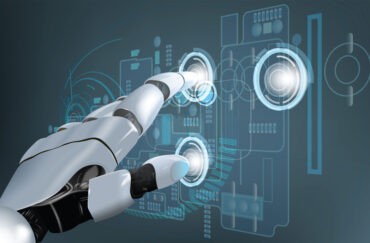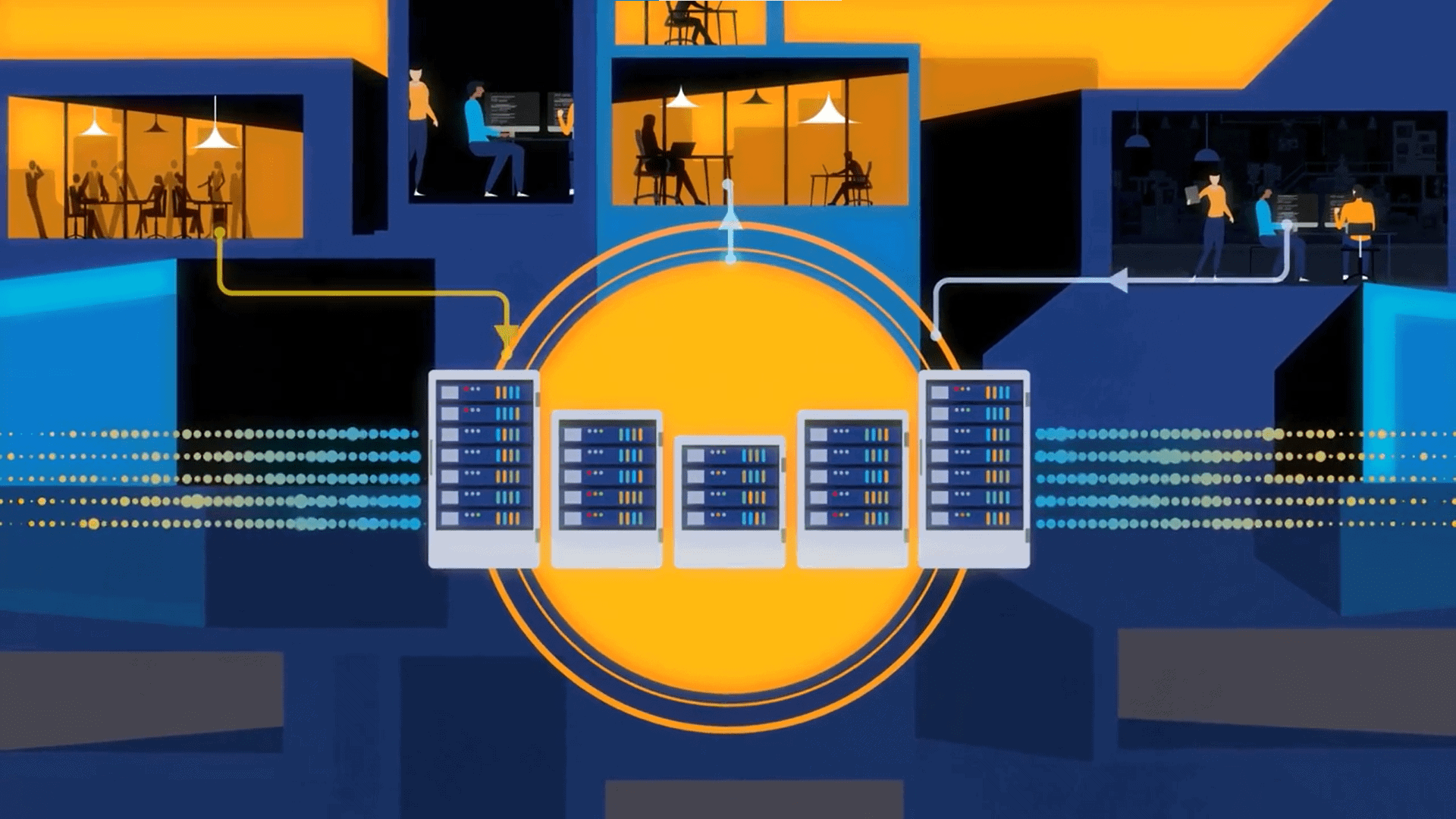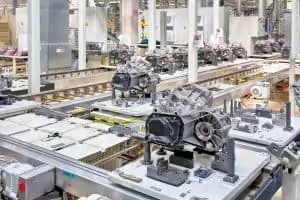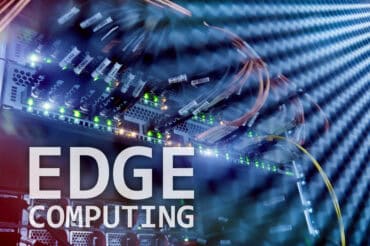
In this week’s real-time analytics news: NVIDIA and its partners made multiple AI-related announcements at COMPUTEX 2025.
Keeping pace with news and developments in the real-time analytics and AI market can be a daunting task. Fortunately, we have you covered with a summary of the items our staff comes across each week. And if you prefer it in your inbox, sign up here!
NVIDIA and its partners used the gigantic COMPUTEX 2025 tradeshow and conference held this week in Taipei to make many AI-related announcements. Announcements most relevant to the RTInsights audience include:
The company announced NVIDIA DGX Cloud Lepton, an AI platform with a compute marketplace that connects the world’s developers building agentic and physical AI applications with tens of thousands of GPUs, available from a global network of cloud providers.
DGX Cloud Lepton helps address the critical challenge of securing reliable, high-performance GPU resources by unifying access to cloud AI services and GPU capacity across the NVIDIA compute ecosystem. The platform integrates with the NVIDIA software stack, including NVIDIA NIM and NeMo microservices, NVIDIA Blueprints, and NVIDIA Cloud Functions, to accelerate and simplify the development and deployment of AI applications.
The company also unveiled NVIDIA NVLink Fusion, which is new silicon that lets industries build semi-custom AI infrastructure with the ecosystem of partners building with NVIDIA NVLink. NVLink Fusion also equips cloud providers with an easy path to scale out AI factories to millions of GPUs, using any ASIC, NVIDIA’s rack-scale systems, and the NVIDIA end-to-end networking platform.
Additionally, the company unveiled RTX PRO Servers, and the NVIDIA Enterprise AI Factory validated design, which is designed to support enterprise use of AI and other demanding business applications. The servers extend the performance and energy efficiency of the NVIDIA Blackwell architecture to data centers that can run virtually every enterprise workload, driving the shift from CPU-based systems to efficient GPU-accelerated infrastructure.
Other related announcements from partners include:
Hewlett Packard Enterprise (HPE) announced enhancements to the portfolio of NVIDIA AI Computing by HPE solutions that support the entire AI lifecycle. These updates deepen integrations with NVIDIA AI Enterprise, expanding support for HPE Private Cloud AI with accelerated compute and launching HPE Alletra Storage MP X10000 software development kit (SDK) for NVIDIA AI Data Platform.
DataRobot announced its inclusion in the NVIDIA Enterprise AI Factory validated design for NVIDIA Blackwell infrastructure to accelerate the secure deployment of AI agents and applications.
DDN introduced an AI-native storage platform built on the NVIDIA AI Data Platform reference design. The new solution helps enterprises streamline access to unstructured data, enabling faster insights.
Dynatrace announced that it is integrating its full-stack, AI and LLM Observability solution into the newly unveiled NVIDIA Enterprise AI Factory validated design.
Elastic announced that Elasticsearch integrates with the new NVIDIA Enterprise AI Factory validated design to provide a recommended vector database for enterprises to build and deploy their own on-premises AI factories.
Microsoft, working with NVIDIA, announced a series of advancements that accelerate agentic AI innovation across cloud and PC platforms. This expanded collaboration is aimed at advancing scientific discovery and unlocking new capabilities for developers, researchers, and enterprises.
NetApp announced that it is working with NVIDIA to support the NVIDIA AI Data Platform reference design in the NetApp AIPod solution to accelerate enterprise adoption of agentic AI.
Red Hat announced its integration with the newly announced NVIDIA Enterprise AI Factory validated design, helping to power a new wave of agentic AI innovation.
Real-time analytics news in brief
SAP SE unveiled innovations and partnerships that put the power of Business AI in every user’s hands. To start, the company expanded users’ ability to use its generative AI assistant Joule. The solution’s new ubiquity includes an action bar powered by WalkMe that studies user behavior across applications, turning the assistant into an always-available, proactive AI that can anticipate users’ needs before they arise.
The company also announced a collaboration with Perplexity that enhances Joule’s ability to draw on structured and unstructured data to solve complex business problems; an expanded library of Joule Agents that reimagine business processes and workflows from the ground up; and it introduced AI Foundation, an operating system for AI development that transforms how enterprises build, deploy and scale AI solutions.
Acceldata debuted its Agentic Data Management Platform, which includes automated root cause analysis and anomaly remediation, collaborative decision-making, seamless extensibility, and more. Additionally, the company introduced the xLake Model Context Protocol (MCP) with Distributed Compute Server, a distributed data control plane purpose-built for intelligent agents, providing seamless control across hyperscalers, Snowflake, Databricks, and on-prem environments.
Alluxio announced the release of Alluxio Enterprise AI 3.6, delivering advanced capabilities for model distribution, model training checkpoint writing optimization, and enhanced multi-tenancy support. This latest version enables organizations to accelerate AI model deployment cycles, reduce training time, and ensure seamless data access across cloud environments. New features in this release include high-performance model distribution, fast model training checkpoint writing, a new management console, and more.
Ataccama announced the release of Ataccama ONE data trust platform v16.1. This new version introduces data lineage and connectivity capabilities, including enhanced diagram export for audit and compliance use cases and improved lineage visualization tools. It also expands pushdown processing for cloud platforms, such as Azure Synapse and Google BigQuery. With these updates, Ataccama helps organizations more easily operationalize automated lineage, govern data across complex environments, and deliver trusted insights at scale.
Cloudera announced the latest release of Cloudera Data Visualization, extending its AI capabilities to customers operating in on-premises environments. With Cloudera Data Visualization, data engineers, business analysts, and data scientists can seamlessly communicate, collaborate, and share insights without compromising data security or governance – all through the common language of visualization.
Confluent announced new Confluent Cloud capabilities that make it easier to process and secure data for faster insights and decision-making. Snapshot queries, a new feature in Confluent Cloud for Apache Flink, bring together real-time and historic data processing to make artificial intelligence (AI) agents and analytics smarter. Confluent Cloud network (CCN) routing simplifies private networking for Apache Flink, and IP Filtering adds access controls for publicly accessible Flink pipelines, securing data for agentic AI and analytics.
Hitachi Vantara announced the launch of Virtual Storage Platform 360 (VSP 360), a unified management software solution designed to help customers simplify data infrastructure management operations and improve decision-making and the delivery of data services. With support for block, file, object, and software-defined storage, VSP 360 consolidates multiple management tools, enabling IT teams to more efficiently control hybrid cloud deployments, gain AIOps predictive insights, and simplify data lifecycle governance.
Neurologyca announced the launch of Kopernica, an AI platform that uses “multi-modal” inputs – a combination of real-time cognitive, vocal, and behavioral intelligence – to allow AI applications to “understand” human emotions. Using a combination of advanced technologies, the platform will be able to detect and measure facial expressions, behaviors, mental states, markers for stress and anxiety, and even the risk of acute medical emergencies such as strokes.
Red Hat announced the launch of llm-d, a new open-source project that answers the most crucial need of generative AI’s (gen AI) future: Inference at scale. Tapping inference technologies for gen AI at scale, llm-d is powered by a native Kubernetes architecture, vLLM-based distributed inference, and intelligent AI-aware network routing, empowering robust, large language model (LLM) inference clouds to meet the most demanding production service-level objectives (SLOs).
In other Red Hat news, the company announced the Red Hat AI Inference Server. The new offering within Red Hat AI, the enterprise-grade inference server, was born from the powerful vLLM community project and was enhanced by Red Hat’s integration of Neural Magic technologies.
Sigma announced a series of new features designed to make it easier for customers to build AI into their data workflows. The updates include major enhancements to its generative intelligence interface, Ask Sigma, and the launch of embedded writeback. With the introduction of the new File Column Type feature, teams can connect unstructured content with structured data for the first time, making complex, real-world workflows fully executable inside Sigma.
Starburst announced a set of product innovations across its flagship offerings: Starburst Enterprise Platform and Starburst Galaxy. The new Starburst AI Agent and new AI Workflows are designed to accelerate enterprise AI initiatives and support the transition to a future-ready data architecture built on a data lakehouse. With native AI tooling, the Starburst Data Catalog, and advancements to data ingestion, table maintenance, and governance, enterprises can unlock the full power of the modern data lakehouse.
VAST Data announced the VAST AI Operating System, an advanced platform purpose-built to fuel the future of AI. The platform is built on VAST’s Disaggregated Shared-Everything (DASE) architecture, a true parallel distributed system architecture – making it possible to completely parallelize AI and analytics workloads, federate clusters into a unified computing and data cloud, and then feed new AI workloads with near-infinite amounts of data from one fast and affordable tier of storage.
Virtana announced the launch of Virtana AI Factory Observability (AIFO), a new capability that extends Virtana’s full-stack observability platform to the demands of AI infrastructure. With deep, real-time insights into everything from GPU utilization and training bottlenecks to power consumption and cost drivers, AIFO enables enterprises to turn complex, compute-intensive AI environments into scalable, efficient, and accountable operations.
Yugabyte announced its support of the new document database-compatible Postgres extension named DocumentDB. This open-source, MIT-licensed, document-oriented NoSQL database aims to provide a Postgres-based open standard for BSON data types. By bringing NoSQL workloads on PostgreSQL, Yugabyte’s multi-modal database provides developers with more flexibility when building next-generation applications while reducing database sprawl.
Zencoder announced the launch of Autonomous Zen Agents for CI/CD, bringing AI automation directly into the software development infrastructure. This new capability enables AI agents to operate independently within CI/CD pipelines, autonomously responding to events, implementing changes, and submitting code through standard pull requests. Early adopters have used the solution for automated bug resolution, enhanced security posture, documentation maintenance, and more.
Partnerships, collaborations, and more
Commvault announced it is extending its Kubernetes protection to support virtual machines (VMs) running on Red Hat OpenShift Virtualization. This new capability enhances cyber resilience for organizations moving to modern application environments.
Clarifai announced it has joined the Vultr Cloud Alliance. This collaboration enables enterprises to build, deploy, and scale AI workloads with enhanced flexibility and control over performance, governance, and cost, leveraging Clarifai’s platform and Vultr’s global high-performance cloud infrastructure.
Glean announced a strategic collaboration with Snowflake to simplify and accelerate structured data analysis for enterprises. Through this collaboration, Glean now integrates directly with Snowflake Cortex Analyst, enabling users and agents to query structured data stored in their Snowflake environment directly from Glean using natural language or SQL.
Opendatasoft announced a worldwide strategic technology partnership with Precisely to accelerate data consumption. By integrating Opendatasoft’s solution with the Precisely Data Integrity Suite, joint clients can now seamlessly deliver accurate, consistent, and contextual data to the entire business, increasing trust and confidence in the data consumed by humans and AI while automating and ensuring robust data quality and governance.
Redis announced that Microsoft will offer its solution as an integrated Azure service. Azure Managed Redis is designed to manage production workloads at scale while giving developers access to the latest enterprise-grade Redis within the Azure ecosystem. The solution, which is a fully managed, in-memory datastore with the latest Redis innovations, is now generally available.
If your company has real-time analytics news, send your announcements to ssalamone@rtinsights.com.
In case you missed it, here are our most recent previous weekly real-time analytics news roundups:
- Real-time Analytics News for the Week Ending May 17
- Real-time Analytics News for the Week Ending May 10
- Real-time Analytics News for the Week Ending May 3
- Real-time Analytics News for the Week Ending April 26
- Real-time Analytics News for the Week Ending April 19
- Real-time Analytics News for the Week of April 12
- Real-time Analytics News for the Week Ending April 5
- Real-time Analytics News for the Week Ending March 29
- Real-time Analytics News for the Week Ending March 22
- Real-time Analytics News for the Week Ending March 15































